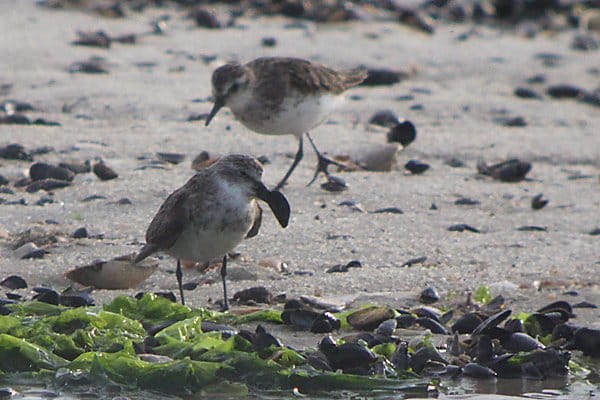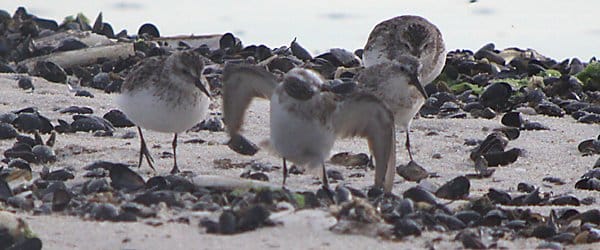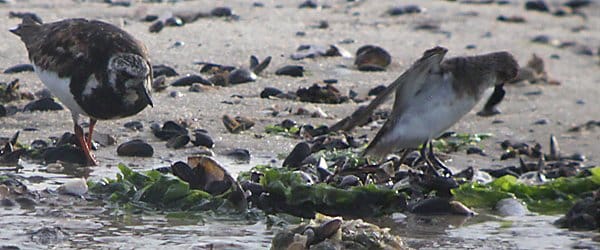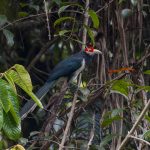Or
Why Eating Raw Seafood Is Dangerous
Or
Ouch! That Looks Like It Smarts!
Or
The Hunter Becomes The Hunted
What am I talking about? A very unfortunate Semipalmated Sandpiper that chose the wrong mussel to make into a meal. It was at Jones Beach State Park a couple of weeks ago and all of the five birders who observed this poor bird’s plight felt nothing but pity.
I am definitely not an expert or a scientist or anything but from what I understand this looks like very good news for the Critically Endangered Spoon-billed Sandpiper. After all, Shell-billed Sandpiper must be closely related so maybe we can get a captive breeding program going and then backcross the results later and save the spoonie? Great idea, no?
*crickets*
Fine, you’re probably right, it is too ambitious a program anyway.
Anyway, the sandpiper struggled with the shell for over fifteen minutes, occasionally jumping up and flapping its wings vigorously or shaking its head or doing both at the same time. Nothing seemed to work. Then we were all distracted by the Hudsonian Godwit that was also present awakening from its slumber and letting us see its bill and when we looked again for the shell-bill it was gone. Or it was present sans shell. I imagine the latter is more likely.
I picture the sandpiper, ten years from now, with dozens of sandpiper grandchildren gathered around, telling the tale of the foot-long beast of shellfish that put the dents in its bill. But maybe that’s just me.
…
















There are documented cases of bivalves killing shorebirds. It’s not killing them in the sense of predation, but sometimes a bird will die from starvation if it can’t get the shell off.
Poor little guy, but part of me does want to chuckle at the vision of him trying to shake it loose! Just hope it didn’t hurt him.
Ouch indeed!! Try having a clothespeg on your lips and not being able to get it of!!
Nice thought Corey, but with luck the Spoonie might not need the help of the Shellbill. There is a captive breeding programme getting underway, at the Wildfowl & Wetlands Trust in England, and I am running the London Marathon in April 2012 to raise funds for it. Please visit http://www.justgiving.com/sandpiper to find out more or donate.